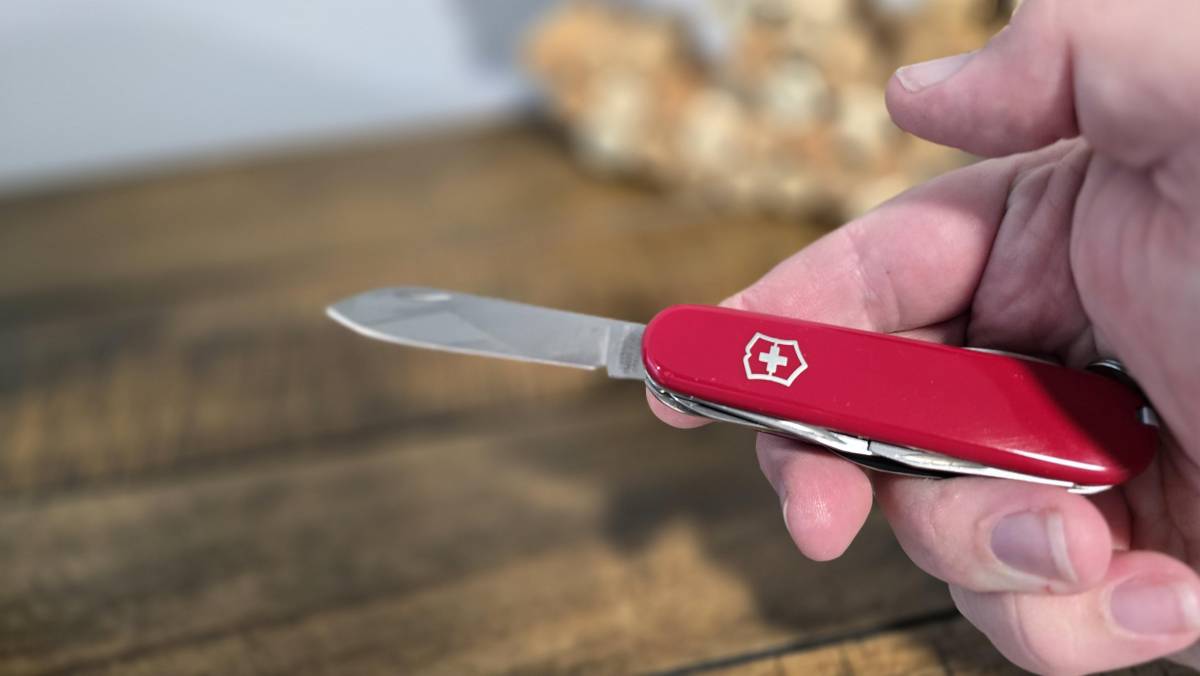Teaching children how to use a pocket knife safely is an essential skill that parents and guardians should consider imparting. knife safety for kids is a skill that needs to be taught early in life since you can't control when they might pick up something sharp and think that it is just another shiny toy. Pocket knives are valuable tools for outdoor activities and survival situations, but children need to understand the responsibility that comes with handling a knife.
How Many Kids Do You Have?
- Pocket knives are valuable tools but require responsibility and safety education for children.
- Choosing the right size and locking mechanism of the knife, as well as using protective gear, can reduce the risk of accidents.
- Parents should supervise their children and establish clear rules and guidelines for safe handling practices.
- Children should be mature enough to use a pocket knife and start with smaller knives to develop their skills and confidence.
Like many other men, one of my first exposures to the world of pocket knives was with a classic "Swis Army" knife from Victorinox. It was a fun tool in a bright red package that had a seemingly endless array of gadgets and tools to "play with". Over the years that line of pocket knives continued to grow and I found different uses for the tools that could fold out of the knife. From magnifying glass to a corkscrew, bottle opener, screwdriver, even that toothpick and tiny pair of tweezers that came in handy when you got a splinter while whittling.
Victorinox Swiss Army knives continue to fascinate men and boys of all ages. This lifelong passion must start early with proper pocket knife safety training!
While accidents will happen as "boys are boys", it's crucial to ensure that children are mature enough to use a knife and understand its potential dangers.
The first step in teaching pocket knife safety is to emphasize the importance of safety education. Parents and guardians should make sure that children understand that knives are not toys and should be treated with respect.
They should also emphasize the importance of following rules and best practices when handling a knife to avoid accidents. This article will provide tips and tricks for teaching pocket knife safety to children, including choosing the right size knife, establishing safety rules, and resources for practicing knife-handling skills.
10 Tips To Keep Kids Safe When Using Pocket Knives
One of the biggest challenges with pocket knives is that they aren't big and scary like you might find with a classic hunting knife. These are, by nature, going to be smaller blades designed to fold safely into the handle to keep it safe. However, that doesn't mean those small blades can't still pack a ton of pain if used improperly. From multi-tools like the classic Leatherman to Swiss Army knives these are some of the most useful tools in any man's collection and so it also makes a great opportunity to have a conversation about knife safety with a young man ... or lady ... in your family.
- Always assume the pocket knife is sharp and handle it with care.
- Demonstrate proper grip and technique for holding and using the pocket knife.
- Make sure your child understands that a pocket knife is a tool, not a toy, and should only be used for its intended purpose.
- Teach your child to keep their fingers away from the blade when cutting or slicing.
- Show your child how to safely close the blade after each use.
- Explain the importance of keeping their pocket knife clean and sharpened regularly for safety purposes.
- Instruct your child to never point or wave the pocket knife in anyone’s direction, even if they are joking around or playing games with it.
- Ensure that your child knows to always cut away from themselves when using the pocket knife, rather than towards themselves or anyone else nearby.
- Remind your child that they should never run with a pocket knife in their hand as this can lead to serious injury if they fall or trip while running with an open blade in their hand.
- Supervise your child at all times when they are using a pocket knife until you feel confident that they understand how to use it safely and responsibly on their own without any risk of injury or harm coming to them or anyone else nearby them while using it .
Teaching Kids About Pocket Knife Safety
Safety education is of utmost importance when teaching children how to use a pocket knife, as it provides a baseline for establishing safe handling practices and reducing the risk of accidents. Parental guidance plays a pivotal role in ensuring that children learn responsible behavior and develop an understanding of the potential dangers associated with pocket knife use.
In the United States, there are more than 1200 knife injuries on a daily basis and 47% of those injuries involved the use of pocket knives, while 36% involved kitchen knives. Sadly, children were more likely to be injured by knives while playing around with a sharp knife or by a knife accident during horseplay and other childhood games.
Children need to understand that a pocket knife is a tool, not a toy, and must be handled with care and attention. Parents should choose the right size of knife for their child and ensure that it is securely in place when opened to prevent accidents. They should also teach their child to keep the knife sharp and clean, and to establish a safety circle when using it.
It is also important to teach children to cut away from themselves and to start small, emphasizing the importance of respecting the knife's power and potential for harm. Parents can help children develop a sense of responsibility and respect for the tool and those around them by teaching them pocket knife safety.
Safety First: Choosing the Right Knife For Your Child
When selecting a pocket knife for a child, consider the knife's size in relation to the child's hand when closed as one of the first things you look for. A knife that is too large for a child's hand can be difficult to control and potentially dangerous.
On the other hand, a knife that is too small may not be as effective for certain tasks. It is also important to consider the blade's locking mechanism. A knife with a secure locking mechanism can prevent accidental closure while in use, reducing the risk of injury.
When choosing a pocket knife for a child, it is best to opt for a knife that is the same size or smaller than the child's palm when closed. Additionally, a knife with a locking blade mechanism can provide an added layer of safety.
By taking these factors into account, parents can ensure that their children are equipped with a pocket knife that is both safe and effective for their needs. As with any tool, it is important to teach children proper handling and safety techniques to prevent accidents and promote responsible use.
Pocket Knife Safety Rules and Best Practices
Establishing clear rules and guidelines for the use of a pocket knife can help promote responsible and safe handling practices in children. It is important to emphasize that a pocket knife is a tool, not a toy, and should be treated as such.
Establish Clear Rules for Pocket Knife Use
When introducing a pocket knife to your child, begin by setting clear rules and guidelines. Make it clear that a pocket knife is a tool, not a toy, and should be handled responsibly at all times. Ensure your child understands the importance of never using the knife to harm or threaten others, and keep it out of reach of younger children when not in use.
Start with a Small Blade to Build Familiarity
To help your child get comfortable with the feeling of a knife in their hands, start with a small blade. This approach allows them to become familiar with the weight and grip of the knife, promoting confidence and control. A smaller blade is easier for young hands to manage, reducing the risk of accidents while they learn the basics of knife safety and handling.
Supervise and Enforce Safe Practices
Always supervise your child while they are using a pocket knife, ensuring they follow safety rules such as cutting away from themselves and closing the knife when not in use. Gradually increase the size of the blade as their skills improve, while consistently reinforcing safe practices to develop responsible habits.
Teach Safe Handling Techniques
Teach your child essential safe handling techniques, like keeping fingers and hands away from the blade and always cutting on a stable surface. Consider using slice-resistant gloves and finger guards to provide an extra layer of protection. Regular practice with these techniques will help your child build the skills necessary for safe and responsible knife use.
Teaching safe handling techniques is also crucial. Children should be taught to keep their fingers and hands away from the blade at all times, and to always cut on a stable surface. In addition, slice-resistant gloves and finger guards can provide an extra layer of protection.It is also important to stress that pocket knives should never be used to harm or threaten others, and that they should be kept out of reach of younger children. By establishing clear rules and emphasizing safe handling practices, parents can help ensure that their children develop responsible and safe habits when using a pocket knife.
Hey James Hills wants you to share this!

